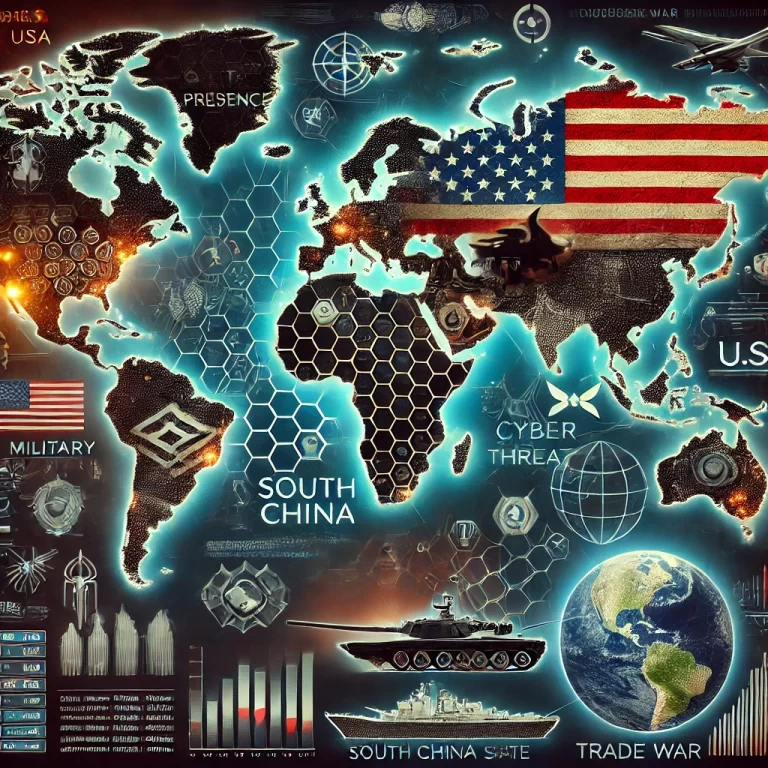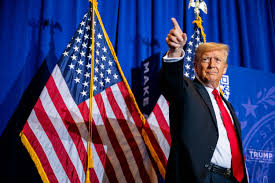
Thousands Flee M23 Rebel Group in the DRC Following Fresh Fighting: An In-Depth Investigation
Thousands of civilians are fleeing renewed clashes in the Democratic Republic of the Congo (DRC) as the M23 rebel group surges closer to Goma, the capital of North Kivu Province. The conflict in this resource-rich region has exacerbated what the United Nations High Commissioner for Refugees (UNHCR) calls one of the world’s most severe humanitarian crises.
Thousands of civilians are fleeing renewed clashes in the Democratic Republic of the Congo (DRC) as the M23 rebel group surges closer to Goma, the capital of North Kivu Province. Under the command of Sultani Makenga (M23’s military leader) and Bertrand Bisimwa (its political leader), M23 stands accused by Congolese authorities of receiving military support from neighbouring Rwanda—allegations that Rwandan President Paul Kagame continues to deny. The conflict in this resource-rich region has exacerbated what the United Nations High Commissioner for Refugees (UNHCR) calls one of the world’s most severe humanitarian crises, with over seven million Congolese internally displaced.
Historical Context
The roots of violence in eastern DRC stretch back to the mid-1990s, following the Rwandan genocide. Various armed factions, including the precursor to M23, found footholds in the mineral-rich provinces of North and South Kivu. Sultani Makenga led the 2012–2013 M23 offensive that briefly captured Goma before withdrawing under international pressure. The group’s resurgence in late 2021 has triggered fresh hostilities and mass displacements, underscoring the cyclical nature of conflicts in the area.
Key Historical Names
● Bosco Ntaganda: Former M23 commander, later surrendered and was tried by the International Criminal Court for war crimes.
● President Félix Tshisekedi: Current President of the DRC who has vowed not to negotiate with M23.
● Former President Joseph Kabila: Led the DRC during the initial M23 insurgency in 2012–2013.
Current Developments
Fresh Fighting and Territorial Expansion
On-the-ground reports from the Armed Forces of the Democratic Republic of the Congo (FARDC) indicate that M23 fighters have seized strategic locations around Sake (approximately 20 kilometres from Goma) and the port town of Minova on Lake Kivu. According to the Military Governor of North Kivu, Lieutenant General Constant Ndima Kongba, the FARDC is “fighting to repel the rebels,” but M23’s effective tactics and possible support from foreign backers place Goma at imminent risk of encirclement.
Local activist Fred Bauma reports alarming overcrowding in displacement camps around Goma. Meanwhile, the newly appointed DRC Minister of Defence, Jean-Pierre Bemba, has acknowledged FARDC’s logistical gaps and vowed to reform the military, though implementation remains slow. Human rights groups, such as Human Rights Watch—whose Central Africa Director is Lewis Mudge—warn that sexual violence, lootings, and extrajudicial killings have escalated across North Kivu.
Root Causes of the Conflict
1. Regional Tensions
○ President Paul Kagame of Rwanda vehemently denies funding or arming M23, but multiple UN Panel of Experts reports suggest otherwise. Uganda has also been accused of tacitly allowing cross-border rebel movements, an allegation Kampala denies.
2. Mineral Wealth
○ Coltan, tin, tungsten, and gold are abundant in eastern DRC. M23 and other armed groups, including the Allied Democratic Forces (ADF), exploit these resources to fund their operations.
3. Governance and Corruption
○ Analysts point to weak state institutions in Kinshasa, long-standing corruption, and mismanagement of resources as critical factors weakening the FARDC’s capacity to hold territory.
Humanitarian Impact
UNHCR, alongside NGOs like Oxfam and the International Committee of the Red Cross (ICRC), notes critical shortages in shelter, food, and medical supplies among displaced communities. Bintou Keita, the Special Representative of the UN Secretary-General and Head of MONUSCO (United Nations Organization Stabilization Mission in the DRC), has repeatedly called for urgent assistance, citing grave concerns over human rights violations and the potential for epidemics in overcrowded camps.
Key Names in Humanitarian Response
● Bintou Keita: MONUSCO Chief, advocating enhanced civilian protection.
● Christophe Lutundula: DRC’s Deputy Prime Minister and Minister of Foreign Affairs, who has been vocal at the UN about Rwanda’s alleged meddling.
● Félix Tshisekedi: President of the DRC, urging international intervention and sanctions against M23’s backers.
International and Regional Reactions
1. United Nations (MONUSCO)
○ Governed by UN Security Council Resolution 2409, MONUSCO has an Intervention Brigade mandated to neutralise armed groups. However, this mandate is constrained by rules of engagement and coordination with the Congolese government.
2. East African Community (EAC)
○ Former Kenyan President Uhuru Kenyatta, now a key EAC mediator, has been facilitating peace talks. Yet these efforts have not secured a lasting ceasefire.
3. Southern African Development Community (SADC)
○ Countries like South Africa and Tanzania previously assisted FARDC in operations against rebel factions. Renewed collaboration with SADC militaries is under discussion but not fully realised.
Potential Allies and Why They Matter
● SADC Nations (e.g., South Africa, Angola): Possess relatively advanced militaries and logistical capabilities. Their intervention could supplement FARDC’s manpower and resources.
● European Union and the United Kingdom: Could impose targeted sanctions against M23 supporters, provide specialist military training, and support humanitarian efforts.
● United States: Historically offered limited counter-terrorism support in the region; a larger role could involve providing intelligence, equipment, and diplomatic pressure to deter regional sponsors of armed groups.
Why the DRC Has Failed to Defeat M23
1. Military Weakness and Corruption:
○ General Philémon Yav, among other officers, has been implicated in past mismanagement. Low troop morale, unpaid salaries, and poor coordination hamper effective operations.
2. Insufficient International Leverage:
○ Sanctions on individuals and entities allegedly supplying M23 have been relatively weak or poorly enforced, allowing the group to rebuild.
3. Fragmented Command Structures:
○ Frequent reshuffles within FARDC leadership create an inconsistent chain of command, undermining consistent military strategies.
The UN’s Role and Legal Constraints
● Chapter VII Mandate: Authorises MONUSCO to use “all necessary means” to protect civilians and neutralise armed groups, but local sovereignty remains paramount.
● Political Oversight: The DRC government, led by President Félix Tshisekedi, must grant consent for large-scale offensives, limiting unilateral UN action.
● Budgetary Shortfalls: UN peacekeeping missions often face funding gaps, resulting in logistical and operational constraints.
Potential Advanced Military Tactics for the DRC
1. Intelligence-Gathering and Surveillance
○ Deploy unmanned aerial vehicles (UAVs) and improved satellite imaging to track M23 troop movements, supply chains, and infiltration routes.
2. Rapid Reaction Forces (RRF)
○ Train and equip specialised FARDC units capable of quick deployments, possibly under the guidance of foreign military advisers from South Africa or Egypt.
3. Securing Supply Corridors
○ Establish fortified checkpoints around Sake, Minova, and major roads into Goma to prevent the flow of illicit arms.
4. Counter-Insurgency Training
○ Invite seasoned instructors—potentially from Tanzania, Kenya, or France—to instruct FARDC in asymmetric warfare, intelligence analysis, and local community engagement.
5. Joint Operations with Regional Forces
○ Pursue coordinated operations with SADC and EAC countries under a neutral oversight body to disable cross-border support for M23.
Execution Strategy
● Procurement: Acquire equipment through bilateral deals with countries like South Africa (renowned arms industry) or coordinate with the African Standby Force.
● Logistics: Upgrade roads, depots, and communications in North Kivu to ensure steady supplies.
● Diplomatic Pressure: Advocate for stricter UN and EU sanctions on individuals, both in the DRC and the region, who are found to be sponsoring armed groups.
Exposing Allies That Have Failed the DRC
Over the past decade, multiple peace agreements have been brokered by regional blocs and international mediators, yet most have not been enforced consistently.
● Addis Ababa Framework Agreement (2013): Signed by several African nations and overseen by the UN, AU, and SADC. Implementation lagged as local actors and neighbouring states pursued conflicting agendas.
● Former Mediators: High-profile negotiators like Mary Robinson(former UN Special Envoy to the Great Lakes Region) and Modibo Touré (UN Special Envoy) proposed frameworks for demobilisation, only to see them falter.
● Regional States: Some neighbours have been implicated in sustaining armed factions for geopolitical gains, undermining Congolese sovereignty and peace.
Conclusion: A Call to Action and Hope for Change
The surge of displaced families—trekking for days to find shelter in Goma—represents a deep humanitarian calamity. People like Fred Bauma and other civil society leaders lament the repetitive cycle of displacement, sexual violence, and child soldier recruitment. Yet, despite these enormous challenges, there remains a clear, albeit difficult, path forward.
Hope and Responsibility
● President Félix Tshisekedi and Defence Minister Guy Kabombo Muadiamvita must champion transparent military reforms and anti-corruption measures to ensure FARDC’s credibility.
● The international community, especially SADC, EAC, and global powers, should provide comprehensive support—from targeted sanctions to humanitarian aid—to alleviate civilian suffering and weaken M23’s capacity.
● Civil Society Organisations (CSOs) and community leaders need robust backing to promote reconciliation, document abuses, and hold perpetrators accountable.
For the millions enduring incessant turmoil in North Kivu, the promise of lasting peace hinges on genuine collaboration, stringent enforcement of international agreements, and an unwavering commitment to justice. Empowering local voices, exposing backroom sponsorships, and bolstering military capacity could finally turn the page on decades of conflict—offering a region long plagued by violence a brighter future.
Aric Jabari is the Editorial Director of the Sixteenth Council.



